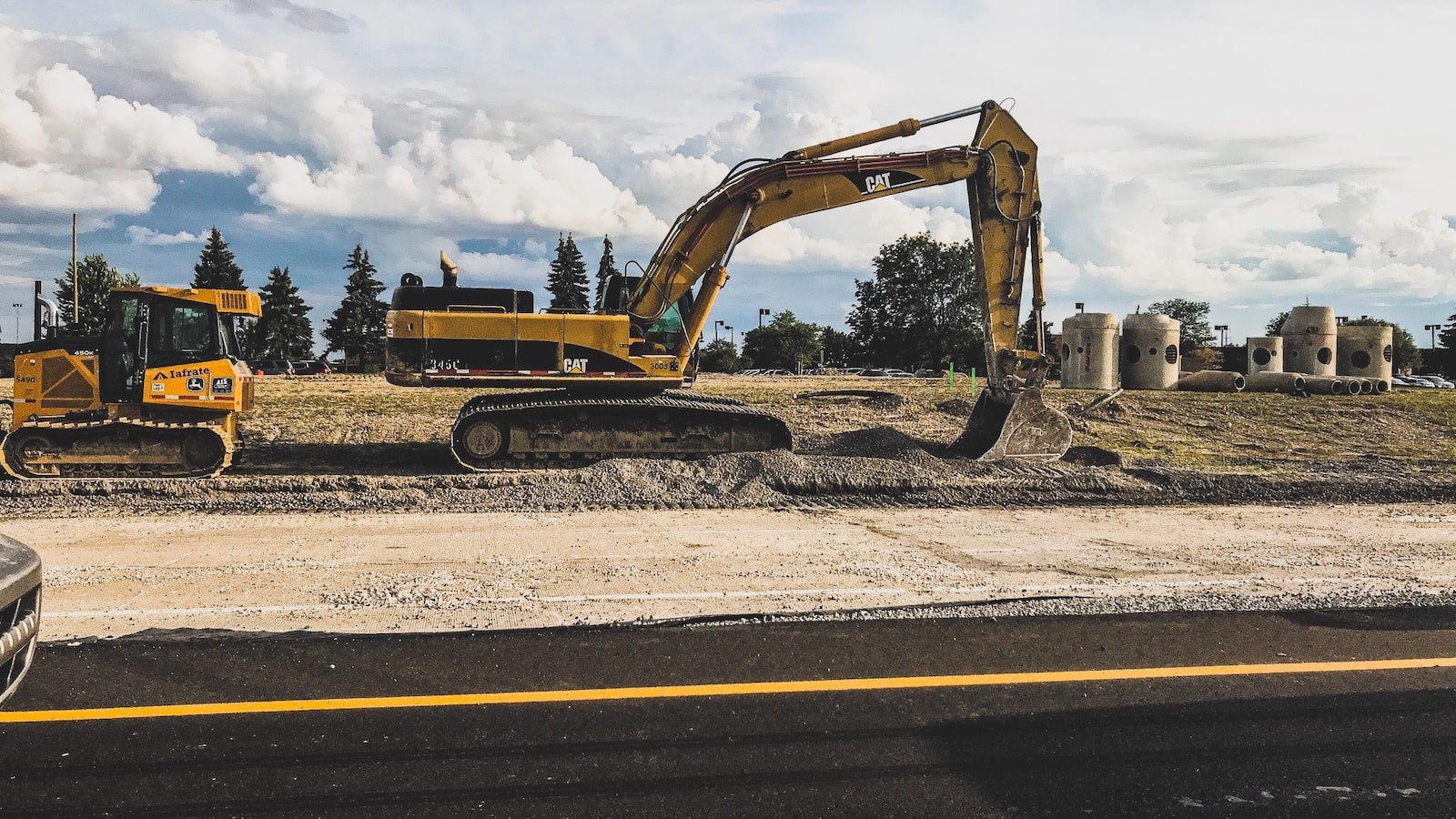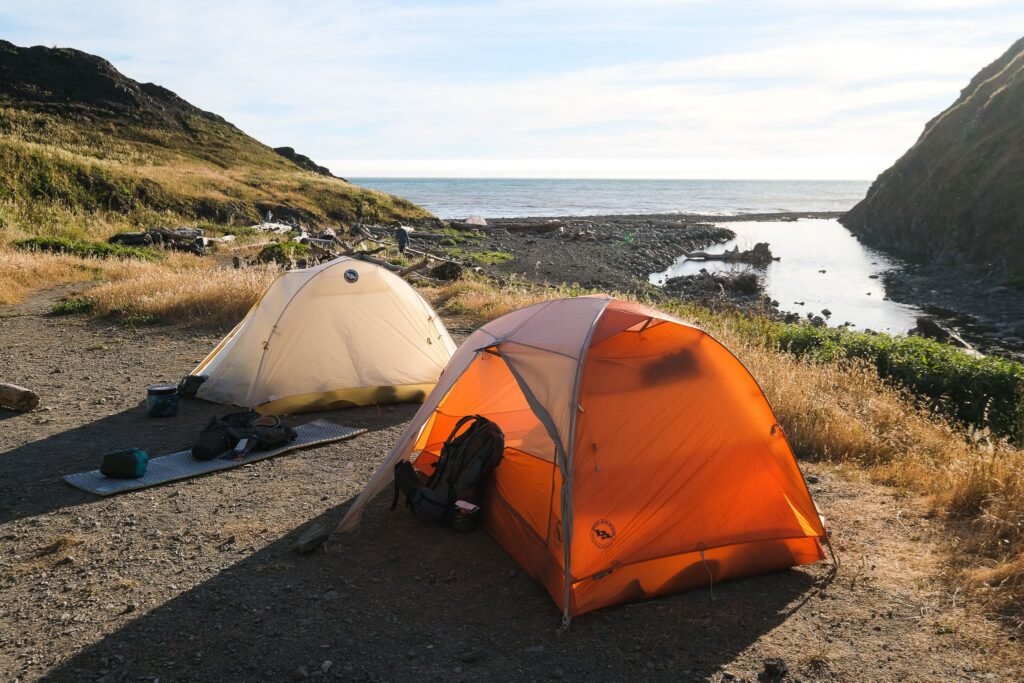Now Reading: How to Build a Raft for Wilderness Waterways
-
01
How to Build a Raft for Wilderness Waterways

How to Build a Raft for Wilderness Waterways
Picture yourself gliding down a pristine river, surrounded by the wild beauty of untouched nature. The gentle, rhythmic flow of the water carries you further into the heart of the wilderness, where adventure awaits at every turn. But there’s a catch – there are no bridges, no ferry services, just uncharted waterways eager to test your expanse-seeking spirit. Fear not, for you hold the key to unlocking this untamed world: a homemade raft. In this guide, we will unveil the secrets of constructing a sturdy, reliable raft that will serve as your medium to navigate and conquer the wilderness waterways. So, gather your supplies, strap on your ingenuity, and get ready to embark on an unforgettable journey into the heart of the unknown.
Table of Contents
- Choosing the Right Materials for Building Your Wilderness Raft
- Understanding the Design and Construction of a Sturdy Raft
- Essential Techniques for Assembling and Securing the Raft Components
- Navigating Wilderness Waterways Successfully with Your Raft
- Ensuring Safety and Preparedness for an Unforgettable Rafting Adventure
- Q&A
- Wrapping Up

Choosing the Right Materials for Building Your Wilderness Raft
Creating a wilderness raft that can withstand the rigors of the great outdoors requires careful consideration of the materials you use. When selecting the right materials for your raft, durability, buoyancy, and ease of construction are key factors to keep in mind.
To ensure your raft remains sturdy and reliable, opt for materials such as marine-grade plywood or pressure-treated lumber for the frame. These materials are specifically designed to withstand exposure to water and are less likely to rot or warp over time. Reinforce the frame with sturdy ropes or metal brackets to provide additional stability and support.
For flotation and buoyancy, consider using empty plastic barrels or drums. These can be securely attached to the frame using strong nylon straps or heavy-duty ropes. Another option is to use inflatable materials, such as sturdy rubber pontoons or air-filled bladders, which offer excellent buoyancy and can be easily deflated for storage and transportation.
In addition to the frame and flotation materials, it’s crucial to pick the right fabric for the deck and sails. Look for durable, waterproof fabrics like heavy-duty canvas or nylon. These fabrics should be resistant to tears and able to withstand prolonged exposure to sunlight and moisture. Reinforce the stress points with additional stitching or patches for added durability.
Remember, the materials you choose will ultimately determine the success and longevity of your wilderness raft. By carefully selecting sturdy, buoyant, and weather-resistant materials, you can embark on your adventure with confidence, knowing that your homemade raft is built to navigate the wilderness waters safely.
Understanding the Design and Construction of a Sturdy Raft
Rafts have been used for centuries as a reliable and versatile mode of transportation across bodies of water. is essential for safe and successful journeys. Whether you plan to embark on a leisurely river expedition or a thrilling whitewater adventure, these key elements will help you create a reliable vessel:
1. Material selection: Choosing the right materials is crucial when constructing a sturdy raft. Strong, lightweight, and buoyant materials such as high-quality wood, PVC pipes, or inflated rubber tubes can serve as a solid foundation.
2. Frame construction: The frame of the raft provides structural support and stability. It can be built using a variety of methods, including lashing together logs, securing PVC pipes with connectors, or constructing a metal framework. Ensuring the frame is securely fastened and evenly distributed will enhance the raft’s durability.
3. Buoyancy and flotation devices: To keep the raft afloat, incorporating buoyancy and flotation devices is essential. This can be achieved by attaching barrels, air-filled containers, or inflatable chambers to the frame. Adequate distribution of these devices ensures balanced flotation and stability in rough waters.
Essential Techniques for Assembling and Securing the Raft Components
When it comes to assembling and securing your raft components, there are a few essential techniques that you must master in order to ensure a safe and successful journey on the water. Follow these tips to guarantee a sturdy and reliable raft:
- Select the Right Materials: Begin by carefully choosing the appropriate materials for your raft. Opt for durable and waterproof components, such as sturdy wooden planks or inflatable pontoons. Ensuring the quality of your materials will lay a solid foundation for your raft’s construction.
- Building a Solid Framework: Start by constructing a strong and stable framework for your raft. Align the planks or pontoons tightly, ensuring they are evenly spaced and securely fastened. Utilize sturdy ropes or metal brackets to reinforce the structure, guaranteeing its stability against the water’s forces.
- Waterproofing and Sealing: Protect your raft from leaks and water damage by applying a reliable waterproofing sealant. Coat all exposed surfaces, paying extra attention to joints and connections. This additional layer of protection will not only increase the longevity of your raft but also keep you and your belongings dry throughout your journey.
- Securing Supplies and Equipment: Before setting sail, make sure to securely fasten all your supplies and equipment to the raft. Use sturdy ropes or bungee cords to prevent any items from falling overboard, ensuring that they remain easily accessible yet secure during your adventure.
By mastering these essential techniques, you’ll be well-prepared to assemble and secure the components of your raft, providing you with a solid foundation and peace of mind during your water-bound escapades.
Navigating Wilderness Waterways Successfully with Your Raft
Embarking on an adventure into the untamed wilderness requires careful planning and preparation, especially when navigating treacherous waterways with your trusty raft. Whether you’re a seasoned explorer or a beginner thrill-seeker, mastering the art of successfully traversing wilderness waterways will be crucial for an unforgettable journey. Here are some essential tips to ensure your rafting experience is both safe and exhilarating:
1. Choose the Right Raft
Size matters: Consider the number of people on your expedition and the amount of gear you’ll be carrying. Opt for a raft that can comfortably accommodate everyone without compromising stability. Remember, a more substantial raft may provide better control in swift currents or turbulent rapids.
2. Pack the Essentials
Life-saving gear: Prioritize safety by packing essential items such as life jackets, a first aid kit, and a whistle. Protect your belongings by storing them in waterproof dry bags or containers. Additionally, a pump or repair kit should always be at hand to fix any unexpected leaks.
3. Study the Waterways
Research and plan: Before setting off, study detailed maps and gather information about the waterways you’ll be navigating. Pay attention to potential hazards like submerged rocks or fallen trees. Keeping a navigation chart or compass handy can also help you stay on course.
4. Master Rafting Techniques
Paddle like a pro: Familiarize yourself with essential rafting techniques such as forward and backward strokes, eddy turns, and ferrying. Practice these techniques in calmer waters before tackling challenging sections. Communication among rafters is key, so establish clear hand signals or verbal commands.
5. Stay Vigilant and Respect Nature
Be aware: Constantly assess the water conditions, adapting your approach accordingly. Keep an eye out for changing river currents, potential hazards, and weather conditions. Respect the wilderness by adhering to Leave No Trace principles, keeping the environment pristine for future adventurers.
Ensuring Safety and Preparedness for an Unforgettable Rafting Adventure
Embarking on a thrilling rafting adventure is an experience like no other. However, it is essential to prioritize safety and preparedness to ensure an unforgettable journey. Here are some key tips to consider before venturing into the wild rapids:
- Choose a Reputable Rafting Company: It is crucial to select a well-established rafting company with experienced guides and a strong safety record. Do your research, read reviews, and ensure that the company prioritizes safety above all else.
- Equip Yourself with Proper Gear: Before hitting the water, make sure you have the right equipment. This includes a well-fitting personal floatation device (PFD), a sturdy helmet, and appropriate footwear to ensure stability and protection during the journey.
- Listen to Qualified Guides: Pay close attention to the safety briefing provided by your rafting guide. They will brief you on paddling techniques, emergency procedures, and how to respond to different scenarios while on the water. Following their instructions is crucial to prevent accidents and ensure everyone’s safety.
- Stay Physically Fit: Rafting can be physically demanding, so it’s essential to stay in good shape. Engage in regular physical activity that targets your upper body strength, as well as cardiovascular endurance. This preparation will help you cope with the physical challenges of maneuvering through the rapids.
- Be Weather Aware: Keep an eye on the weather forecast before your adventure. Certain weather conditions, such as heavy storms or rapid changes in water levels, may pose hazards. If the weather seems unfavorable, consult with your rafting company to reschedule to a safer time.
- Follow Safety Practices: While on the water, follow safety practices recommended by your guides. These may include maintaining a low center of gravity in the raft, keeping your hands inside the boat, and communicating effectively with your teammates.
- Enjoy the Adventure Responsibly: While the thrills of rafting can be captivating, it’s important to remember that your safety and the safety of others should always come first. Respect the natural environment, follow the principles of “Leave No Trace,” and revel in the beauty of the river without causing harm.
By prioritizing safety and being prepared, you can embark on an unforgettable rafting adventure knowing that you have taken the necessary precautions to make it a safe and exhilarating experience.
Q&A
How do I choose the right materials to build a raft?
You should look for lightweight and buoyant materials such as barrels or drums, sturdy wooden planks, strong ropes, and waterproof tarps. Make sure to select materials that can withstand the water currents and conditions of the wilderness waterways you will be exploring.
Can I use any type of wood to build a raft?
While it’s important to use sturdy wood for your raft, it’s best to avoid treated or painted wood as these may contain chemicals harmful to the environment. Opt for untreated hardwoods like oak, cedar, or birch for a strong and reliable raft.
What’s the recommended size for a wilderness waterway raft?
The ideal raft size depends on the number of people and equipment you plan to carry. Generally, a raft measuring around 8 to 12 feet in length and 6 to 8 feet in width should provide enough space and stability for most wilderness adventures.
What are some essential tools I will need to build a raft?
You’ll need basic tools such as a saw, hammer, drill, measuring tape, and wrenches to assemble your raft. Additionally, having a sturdy knife or utility tool will come in handy for various cutting tasks during the construction process.
What’s the best way to secure the barrels or drums to the raft?
To secure the barrels or drums to the raft, create a frame using sturdy wooden planks that match the width of the raft. Position the barrels or drums inside this frame and securely attach them using strong ropes or straps, ensuring they are evenly distributed for proper balance.
How can I make my raft more stable?
To enhance the stability of your raft, consider adding a center support beam made from a strong wooden plank to distribute weight evenly. Additionally, securing additional crossbeams between your main raft and the support beams can further increase stability by reducing flex and sway.
What precautions should I take before setting sail on my raft?
Before embarking on your rafting adventure, always check the weather forecast and communicate your plans with someone reliable. Make sure to bring life jackets for everyone on board, carry enough water and food supplies, and learn basic safety and navigation techniques to ensure a safe journey through the wilderness waterways.
Wrapping Up
As the sun begins to dip below the horizon, casting a warm glow over the calm waters of the wilderness, it’s time to bid farewell to the art of raft building. Your journey to mastering the intricate craft of constructing a sturdy vessel capable of navigating the untamed currents of nature’s waterways has come to a close.
With each stroke of your imagination and every creak of timber, the great wilderness bestowed upon you the knowledge to tame its liquid heart. From selecting the perfect materials that would dance in harmony with the aquatic domain, to meticulously fastening them together with the precision of an artisan, you have become the creator of your own aquatic destiny.
Oh, what stories lie ahead on this vessel of your own making! As you embark upon the unknown, floating gracefully amidst hidden treasures and mystical creatures, your newfound raft becomes an extension of your spirit. It mirrors your courage, whispering gently that fear shall not hinder your path.
Oh, how the gentle breeze, carrying whispers from distant lands, caresses your sun-kissed cheeks! Your raft, now a vessel of dreams, carries you further into the wilderness, a siren calling to your adventurous soul. The once daunting concept of wilderness waterways now embraces you as a kindred spirit, inviting you to explore its secrets and revel in its unadulterated beauty.
And as the stars blanket the night sky, illuminating your path with their celestial glow, you reflect upon the journey that brought you to this very moment. The often arduous process of crafting your raft transformed into a labor of love, a testament to your perseverance and unwavering dedication.
So, dear adventurer, as we bid adieu to the realm of raft building, know that the lessons you have learned go beyond the realm of craftsmanship. The wilderness has gifted you with humility, patience, and a profound respect for the delicate balance of its untamed waters.
May your raft forever carry you towards new horizons, a vessel fusing the boundless beauty of wilderness with the indomitable spirit of the explorer. As you navigate the enigmatic waters, may you find solace in the knowledge that you, dear reader, have become a part of nature’s grand tapestry.
Farewell, aspiring raft builders, and may your journeys be filled with wonderment, discovery, and endless possibilities on the marvelous wilderness waterways that await.
As an affiliate, my content may feature links to products I personally use and recommend. By taking action, like subscribing or making a purchase, you’ll be supporting my work and fueling my taco cravings at the same time. Win-win, right?
Want to read more? Check out our Affiliate Disclosure page.





